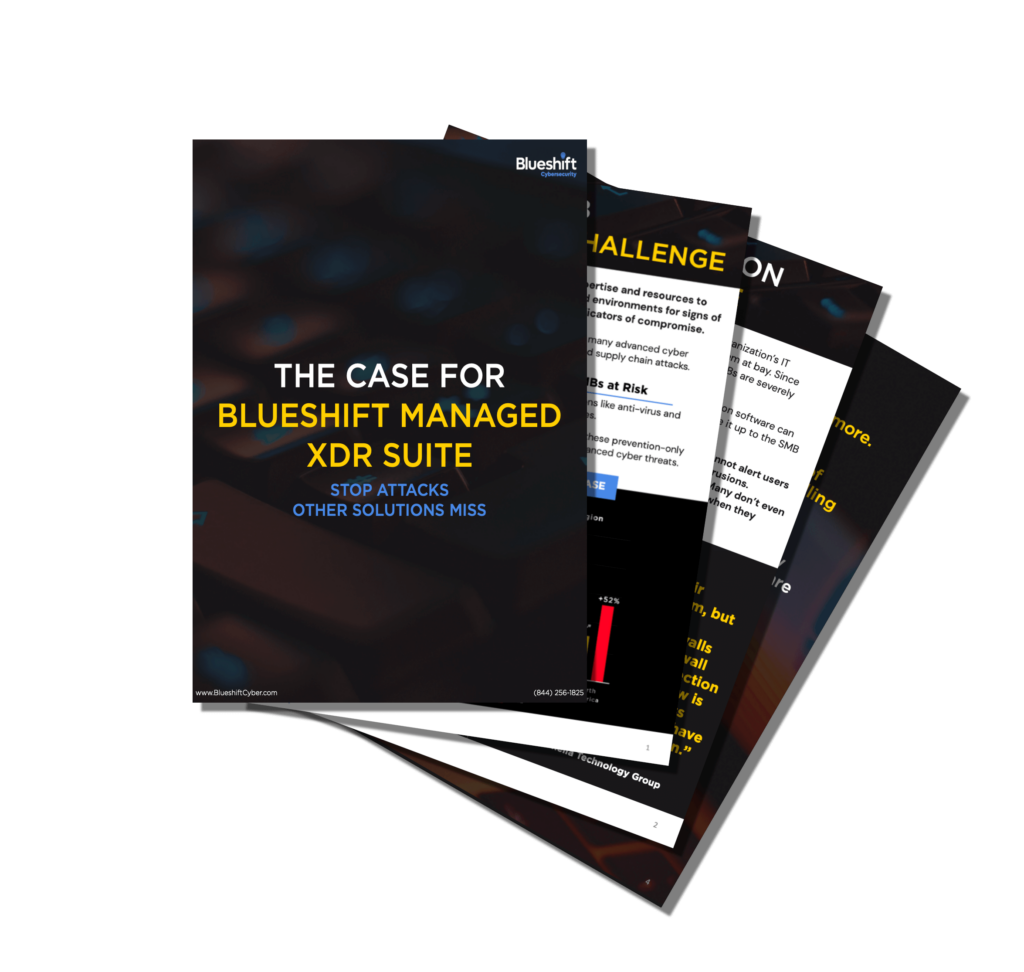Blueshift simplifies compliance initiatives and extends security visibility and management across an entire organization. It integrates with all existing devices, data and systems across the network. That includes cloud, IoT, endpoint, server, remote workers and more.
- Platform
Managed XDR Suite
Fully-managed cybersecurity operations specifically designed to protect all devices and data across your entire IT environment.
Explore More >Managed SOC
U.S. security operations including threat hunting, forensic investigations, and rapid incident response.
Explore More >Managed EPP
Prevent cybercriminals from running malware, disrupting operations, stealing sensitive data, encrypting files, or holding critical digital assets for ransom.
Explore More >Advanced Services
Enhance your organization’s security with optional advanced services including Attack Surface Monitoring, Dark Web Monitoring and more.
- Industries
Industrial Controls
Protect industrial and operational control systems from cyber attack.
Explore More > - Compliance
Request a Demo
Learn how to stop attacks other solutions miss.
- Resources
Request a Demo
Learn how to stop attacks other solutions miss.
- Partners
Request a Demo
Learn how to stop attacks other solutions miss.
- About
Request a Demo
Learn how to stop attacks other solutions miss.
- Contact Us


